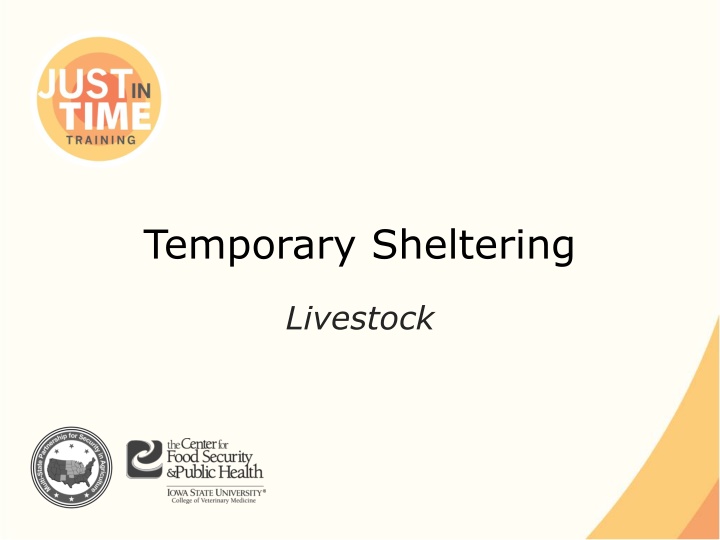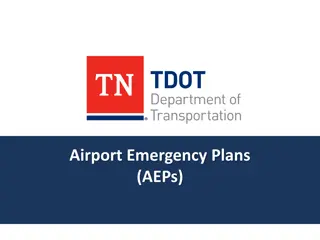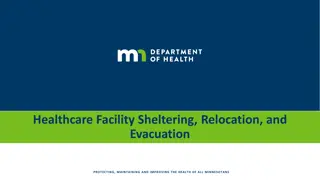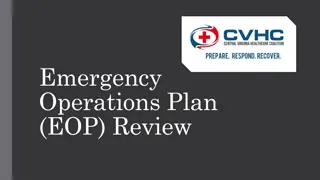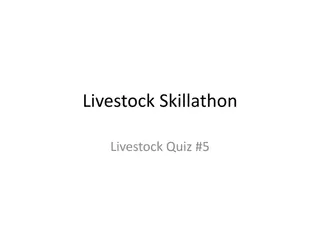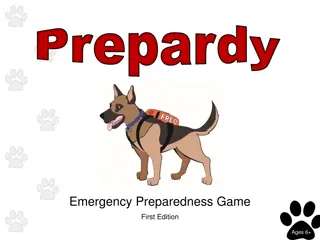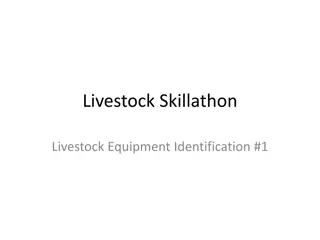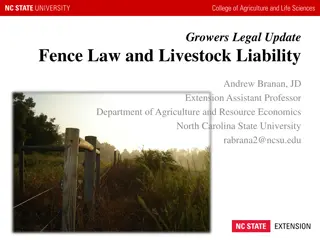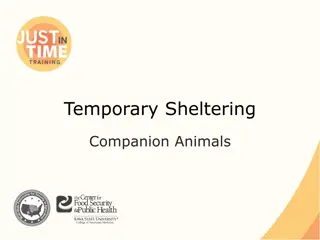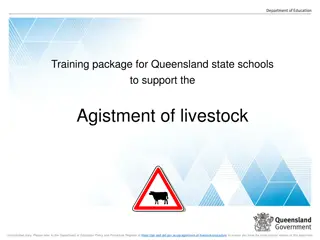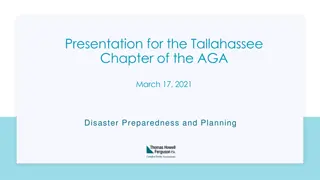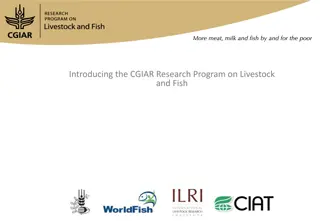Livestock Temporary Sheltering and Emergency Preparedness
This comprehensive guide covers essential aspects of temporary sheltering for livestock during emergencies such as natural disasters, displacement, and evacuation. It includes assessments, planning, facility setup, shelter requirements, possible shelter sites, supplies needed, and transportation considerations. The provided images offer visual aids to assist in understanding the key components of livestock sheltering and emergency response.
Download Presentation

Please find below an Image/Link to download the presentation.
The content on the website is provided AS IS for your information and personal use only. It may not be sold, licensed, or shared on other websites without obtaining consent from the author.If you encounter any issues during the download, it is possible that the publisher has removed the file from their server.
You are allowed to download the files provided on this website for personal or commercial use, subject to the condition that they are used lawfully. All files are the property of their respective owners.
The content on the website is provided AS IS for your information and personal use only. It may not be sold, licensed, or shared on other websites without obtaining consent from the author.
E N D
Presentation Transcript
Temporary Sheltering Livestock
Situations Natural Disasters Displacement Evacuation Animal Health Emergency In-transit Temporary Sheltering: Livestock Just In Time Training
Assessment and Planning Locations Animals Infected or non-infected animals Food and water requirements Species/housing requirements Waste management Personnel Security Length of time Temporary Sheltering: Livestock Just In Time Training
FACILITIES Containment Setup Waste Management Special Needs Temporary Sheltering: Livestock Just In Time Training
Shelter Requirements Containment Fencing, pens, stalls Check for sharp objects Spacing Shelter from elements Wind breaks Shade, fans Warmth Ventilation Temperature Temporary Sheltering: Livestock Just In Time Training
Shelter Requirements Bedding Waste disposal Isolation area for sick animals Special needs Dairy cattle Young animals Temporary Sheltering: Livestock Just In Time Training
Possible Shelter Sites Publicly owned lands Fairgrounds Abandoned or empty feedlots Fenced pastures Climate permitting Other buildings Airplane hangers Livestock auction markets Build shelter on a site Temporary Sheltering: Livestock Just In Time Training
Supplies General Supplies Halters, lead ropes Cleaning supplies Shovels, rakes, wheelbarrows Buckets hoses Office Supplies Paper, pens, computer Intake, release, identification forms Documentation of labor and supplies Temporary Sheltering: Livestock Just In Time Training
Transportation All-weather surface road Two lane One way traffic flow Unload animals at distance from the shelter Vehicles left at shelter should be cleaned and disinfected Temporary Sheltering: Livestock Just In Time Training
Housing the Animals Animals should be segregated by: Sex By herd or flock By species Mothers and young Pregnant animals Isolate sick animals Appropriate density Temporary Sheltering: Livestock Just In Time Training
Waste Management Prompt removal of waste Daily cleaning of stalls Equipment should be cleaned and disinfected after use Separate equipment should be used for isolation animals Temporary Sheltering: Livestock Just In Time Training
HEALTH Food and Water Illness and Injury Handling Temporary Sheltering: Livestock Just In Time Training
Veterinary Care Incoming and outgoing animals need to be thoroughly examined Isolate incoming animals Daily inspections Isolate sick animals Animal disease recognition information should be posted Temporary Sheltering: Livestock Just In Time Training
Handling Animal behavior Stress, panic New surroundings Unpredictable Proper handling minimizes stress Responders with experience Need to know species Temporary Sheltering: Livestock Just In Time Training
SPECIES SPECIFIC Temporary Sheltering: Livestock Just In Time Training
Cattle Food and water Open pasture Grass or baled hay 20-25 lb/day Water 12-15 gallons/day Young animals Additional nutritional requirements Water consumption will increase in hot weather conditions Temporary Sheltering: Livestock Just In Time Training
Small Ruminants Food and water Sheltered pasture Windbreaks, shade Food 3-5 pounds hay/day Water -1 gallon/day Difficult to confine Pregnant animals Enhanced shelter Dairy breeds will require milking Temporary Sheltering: Livestock Just In Time Training
Swine Food and water Food 0.5#/100# Water -1 gallon/head/day Hard surfaces 2.5 sq feet/100# sleeping 5 sq feet/100# general living space Heat stress is significant concern Temporary Sheltering: Livestock Just In Time Training
Resources AVMA Disaster Preparedness and Response Guidebook http://www.avma.org/disaster/emerg_prep_resp_guide. pdf Temporary Housing and Care for Livestock and Poultry Monograph No. 003, Nebraska Department of Agriculture http://www.agr.state.ne.us/homeland/monograph_003. pdf Temporary Sheltering: Livestock Just In Time Training
Acknowledgments Development of this presentation was by the Center for Food Security and Public Health at Iowa State University through funding from the Multi-State Partnership for Security in Agriculture Authors: Sara Viera, MPH; Glenda Dvorak, DVM, MPH, DACVPM
